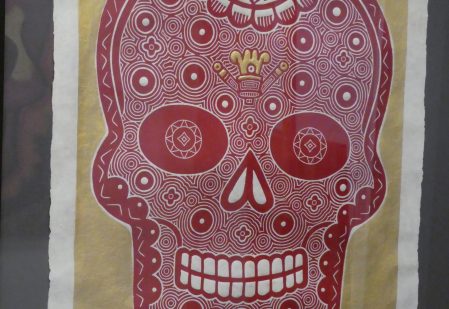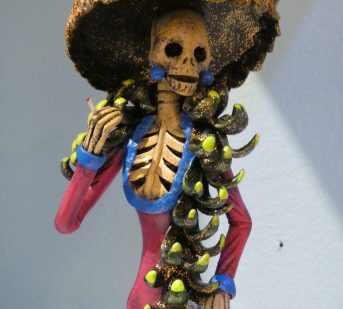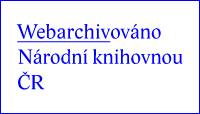




Vernisáž výstavy Mexican „Peyote“
Do 10.3.2020 bude v Latin Art Gallery, Jungmannova 3, Praha 1, přístupná zajímavá výstava Mexican „Peyote“.
Vystavena jsou díla 4 mexických výtvarníků: Ana Marenal, Paulina Suarez, Lotas a Eugenia Belden.
Peyote nebo také Peyotl:
Nařezané a usušené plátky (buttons) z různých druhů kaktusů (Lophophora williamsiii, Anhalonium lewinii) s halucinogenním účinkem. Peyotl pochází z Chihuahanské pouště, hlavně z její části Rio Grande Valley v jižním Texasu a směrem na jih až ke státu San Luis Potosi v Mexiku.Psychoaktivní látkou peyotlu je meskalin, obvyklá dávka je 300 – 500 mg, účinky trvají 8-9 hodin. V některých státech U.S.A. je užívání peyotlu legální a je legitimní součástí náboženských obřadů Native American Church. Jsou to právě kaktusové pupeny, se kterými je možné se v největší míře setkat na černém drogovém trhu.
….
Peyote, also known as mescaline, mescalito, buttons or even its scientific title, Lophophora williamsii, is actually the name of both the hallucinogen and the extremely slow growing cactus from which it’s sourced. While the bitter taste of this subterranean cactus puts off most animals, for backpackers and natives who are made of tougher stuff, they ingest peyote for both recreational and religious reasons, respectively.
While most people associate the pueblo mágico of Real de Catorce, San Luis Potosí with the taking of peyote, it’s found right across Mexico’s northern desert regions (Chihuahua, Coahuila, Nuevo León and Tamaulipas) and even up into southwestern Texas.
Peyote trips
Typically taken as a tea, stewed using the peyote ‘buttons’, this bitter cactus can also be chewed, an act that serves to effectively release the main psychoactive component, mescaline, and induce the famous peyote high for which this humble cactus is known. Introspection is common, while synaesthesia is likely, although nausea is a common side effect before the psychedelic effects hit, and the risk of a bad trip is greater for those with pre-existing or underlying mental health conditions.
Around six peyote buttons are required for the ‘full dose’ of roughly 300g of mescaline, and the trip can last anywhere up to 12 hours total. As well as being used recreationally, nowadays you can find peyote used across the world in meditation and even psychotherapy sessions, as well as to treat addiction in Native American tribe members.
Use of Peyote in Mexican and native culture
However, long before it was the central component to many an edgy backpacker’s anecdote, peyote actually held far deeper spiritual significance amongst Native Americans, particularly the Huicholes (Wixárika) of Mexico who believe it grants them healing skills and the ability to communicate with their gods. For that reason, it long preceded LSD and psilocybin as a mainstream hallucinogen, with remnants of peyote being found in ruins dating back almost 6000 years. Traditional peyote ceremonies often incorporate ritual migrations into the desert to harvest (but not uproot) the cactus, as well as drumming, chanting and attempts to restore spiritual balance. They are typically carried out at night, and it’s said that permission is asked of the spiritual Wirikuta Desert before any peyote is harvested and offerings are given.




 Creative Commons Attribution
Creative Commons Attribution